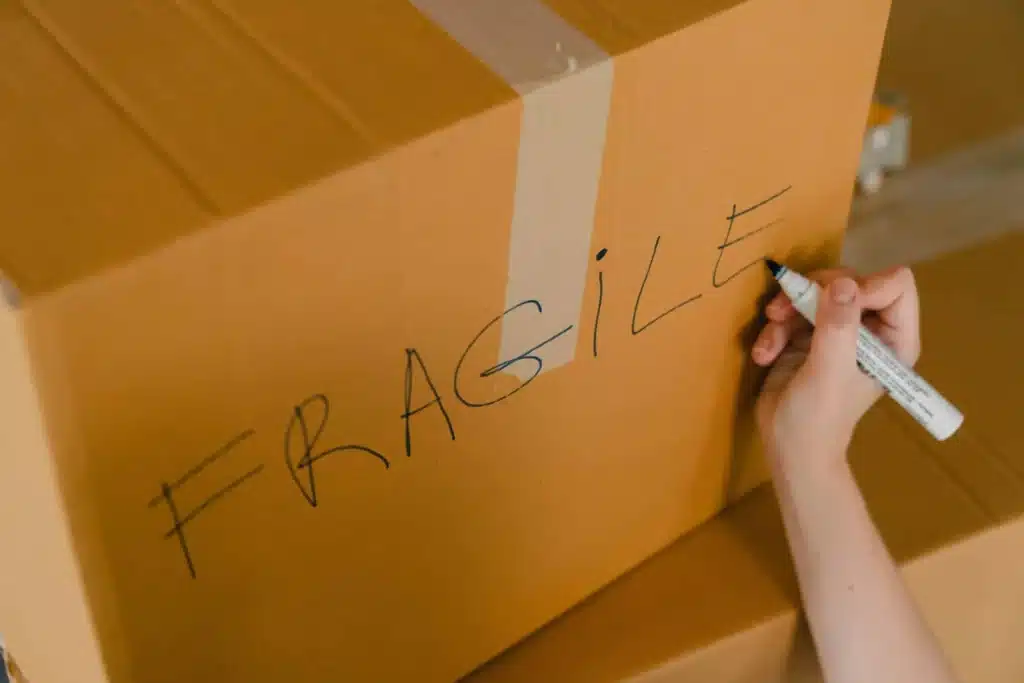
Relocating can be a daunting task, especially when it involves moving delicate furniture pieces. The fear of damaging cherished items often overshadows the excitement of settling into a new space. However, with the right knowledge and techniques, you can ensure the safety of your fragile belongings. This article delves into the art and science of packing fragile items, offering insights, tips, and best practices to make a stress-free move.
The key to a successful move lies in preparation. By understanding the intricacies of packing fragile items, you can prevent potential damages and ensure that your belongings reach their destination in pristine condition. Let’s embark on this journey of safeguarding your precious items during relocation.
Table of Contents
ToggleThe Science Behind Packing Fragile Items
Every item has its unique vulnerabilities. Whether it’s a porcelain vase or a glass dining table, understanding the physics behind moving can make a world of difference. When items are in transit, they are subjected to various forces – from sudden jolts to constant vibrations. The right packing technique can act as a shield, absorbing these forces and preventing any harm.
The Role of Packing Materials
Packing materials are the unsung heroes of any move. They cushion, protect, and insulate items from the rigors of transportation. Bubble wrap, for instance, offers a layer of air-filled pockets that act as shock absorbers. When used correctly, bubble wrap can prevent scratches, cracks, and breakages. On the other hand, box padding ensures that items don’t shift inside the box, minimizing the risk of damages.
Common Mistakes to Avoid:
- Overloading boxes with heavy items.
- Using old or damaged boxes.
- Neglecting to label boxes with “fragile” warnings.
- Failing to secure the bottom of boxes with strong tape.
Tools of the Trade
The success of packing fragile items hinges on the tools and materials you use. From sturdy boxes to specialized packing materials, having the right tools at your disposal can make the process seamless and efficient.
Choosing the Right Materials
The market is flooded with a plethora of packing materials, each designed for specific items. Bubble wrap is ideal for wrapping individual items, offering a cushioned layer of protection. Dividers for glasses, on the other hand, ensure that glassware doesn’t clink against each other. Packing peanuts fill voids in boxes, preventing items from moving during transit.
Pros and Cons of Packing Materials:
- Bubble Wrap:
- Pros: Offers excellent cushioning, versatile, reusable.
- Cons: Can be bulky, not environmentally friendly.
- Packing Peanuts:
- Pros: Lightweight, fills voids effectively.
- Cons: Can be messy, not always biodegradable.
Step-by-Step Guide to Packing Fragile Items
Packing is an art that requires patience, precision, and practice. By following a systematic approach, you can ensure that every item is packed securely and ready for the journey ahead.
From Labeling to Sealing
The first step in packing fragile items is to gather all the necessary materials. Once you have everything in place, start by wrapping each item individually in bubble wrap. Secure the wrap with packing tape, ensuring that no part of the item is exposed. Choose a box that fits the item snugly, without too much extra space. Fill any voids with packing peanuts or crumpled newspaper. Once the item is securely placed inside the box, seal it with strong packing tape. Clearly label the box with “fragile” warnings and handling instructions.
Best Practices for Packing:
- Always place heavier items at the bottom of the box.
- Use dividers for items like glasses and stemware.
- Double-box extremely fragile items for added protection.
Expert Tips and Tricks
While the basics of packing are straightforward, there are nuances that only experts are privy to. These tips and tricks, honed over years of experience, can make the difference between a successful move and a disastrous one.
Making the Most of Your Packing Session
Professional movers often emphasize the importance of organization. Before diving into packing, create a plan. Categorize items based on their fragility and size. This not only streamlines the packing process but also ensures that items are packed in the most efficient manner. Another pro-tip is to avoid overloading boxes. While it might be tempting to fit as much as possible into a single box, this can compromise the box’s integrity and increase the risk of damage.
Do’s and Don’ts of Packing:
- Do: Use specialized boxes for items like mirrors and paintings.
- Don’t: Use newspaper directly on fine china as the ink can transfer.
- Do: Leave a small gap at the top of each box for cushioning.
- Don’t: Rush the packing process. Take your time to ensure each item is secure.
Common Mistakes and How to Avoid Them
Even with the best intentions, mistakes can happen. However, by being aware of common pitfalls, you can take steps to avoid them.
Lessons from the Field
One of the most common mistakes people make is neglecting to label their boxes. This simple oversight can lead to fragile items being mishandled. Another frequent error is using boxes that are too large, leading to items shifting during transit. By understanding these common mistakes, you can be better prepared and ensure the safety of your belongings.
Packing Mishaps and Their Solutions:
- Problem: Using worn-out boxes. Solution: Invest in new, sturdy boxes for fragile items.
- Problem: Neglecting to use enough cushioning. Solution: Always use ample padding, especially at the bottom of the box.
- Problem: Stacking heavy boxes on top of light ones. Solution: Always place heavier boxes at the bottom when loading a moving truck.
The Role of Professional Movers
While DIY packing has its merits, there’s no substitute for the expertise of professional movers. These experts bring years of experience to the table, ensuring that your belongings are in safe hands.
Why Expertise Matters
Professional packing service providers undergo rigorous training to master the art of packing. They understand the unique challenges posed by different items and have specialized techniques to address them. Moreover, they have access to top-of-the-line packing materials, ensuring that your items receive the best protection possible. By entrusting your fragile items to professionals, you can have peace of mind knowing they will arrive at their destination intact.
Advantages of Hiring Experts:
- Access to premium packing materials.
- Efficient and organized packing process.
- Reduced risk of damage due to expert techniques.
Conclusion
Relocating is a significant milestone, and ensuring the safety of your delicate furniture pieces is paramount. By following the guidelines and tips outlined in this article, you can navigate the challenges of packing with confidence. Remember, the key lies in preparation, patience, and using the right materials. And if in doubt, always consider seeking the expertise of professional movers. As you embark on this new chapter, ensure that your cherished belongings are packed with care, ready to grace your new home.
Ready to Make Your Move Stress-Free?
Relocating is more than just moving belongings; it’s about transitioning to a new chapter in life. Ensuring the safety of your cherished items is paramount. With the right knowledge, tools, and perhaps a touch of professional expertise, you can make this journey smooth and memorable. If you’re looking for top-notch packing materials or considering hiring experts for your next move, don’t hesitate. Take the first step towards a hassle-free relocation. Reach out to us today and let’s make your move a success!
Frequently Asked Questions
Bubble wrap is one of the most effective materials for wrapping fragile items due to its cushioning air-filled pockets.
Using the right-sized boxes and filling voids with packing peanuts or crumpled newspaper can prevent items from shifting.
Yes, professional movers bring expertise, specialized techniques, and access to premium packing materials, ensuring the safety of fragile items.
Clearly label the boxes with “fragile” warnings and include handling instructions to ensure they are treated with care.
While recycling is commendable, it’s essential to ensure that old boxes are sturdy and in good condition. If they show signs of wear, it’s better to invest in new boxes for fragile items.







